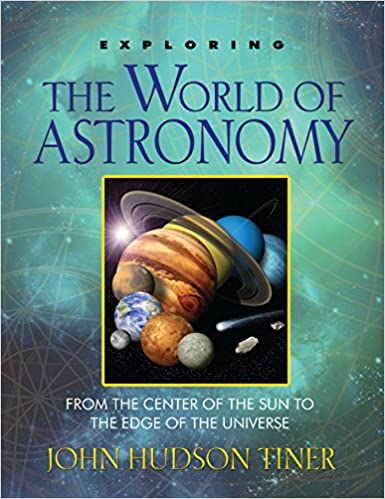The common earthworm, part of the Annelid phylum, (Annelida is Latin for little rings) plays a critical part in producing and maintaining fertile soil. Its role includes forming channels in the soil to allow for effective aeration, a critical process necessary for most soil dwelling life forms. The channels that earthworms produce also allow the soil to hold the large amounts of water that provide for plant survival (Johnson, 2002).
As Charles Darwin concluded, “It may be doubted whether there are many other animals which have played so important a part in the history of the world, as have these lowly organized creatures” (Darwin, 1881, p. 316).
Earthworms even till the soil like a small plow and play a critical role in recycling nutrients by feeding on decaying organic matter and small live organisms, such as protozoa and bacteria. This recycling is required in order to produce a high-grade fertilizer (Conniff, 1993, p. 86). Earthworms can consume about 30 percent of their own weight in plant matter daily, effectively transforming barren soil into high quality fertile soil in a matter of months (Conniff, 1993, p. 88). They also commonly exist in numbers of around one-million per acre of top soil (Stewart, 2004, p. 10).
It was once believed that earthworms were “vermin” (vermis is Latin for worm), a nasty soil problem that one needs to get rid of (Conniff, 1993, p. 87). The first major detailed methodical study of earthworms was Charles Darwin’s last published book, titled The Formation of Vegetable Mould in 1881 (Meysman, et al, 2006). Darwin’s worm book was surprisingly very popular and Darwin “found himself besieged by correspondence from backyard philosophizers of the worm” (Conniff, 1993, p. 88). Furthermore, Darwin discovered from his research that worms are incredibly numerous and transform the earth by eating their way, over and over, through the entire upper soil layer. Much of their waste ends up excreted on the ground surface in the familiar coiling heaps called worm casts. Darwin won popular acceptance for the view:
“that worms make the ground suitable for plants. They aerate and drain the soil with their burrows, drag down leaf fragments to grind up for food and “mingle the whole intimately together, like a gardener who prepares the fine soil for his choicest plants.” Long before the advent of the plow … Darwin wrote, “the land was in fact regularly ploughed” by earthworms.” (Conniff, 1993, p. 89).
Anatomy
Earthworms are small, but are not at all simple creatures. Like humans, they have a complex central nervous system (CNS), a peripheral nervous system (PNS) and a sympathetic nervous system (SNS). The central nervous system consists of two ganglia (clusters of nerve cells) located above the mouth connected to a nerve cord running along its entire length to motor neurons and sensory cells located in each segment. Much is still unknown about earthworms. They do not have ears, yet seem to sense vibrations, and do not have eyes yet somehow can sense light. A large numbers of chemoreceptors are concentrated near the worm’s mouth to allow it to select its food sources and push aside non-food detritus (Stewart, 2004, p. 11). They have definite food preferences. Melon is a favorite, as are most fruits and many vegetables, but fats, meats, dairy are all strongly avoided (Stewart, 2004, p. 83).
Its digestive system, which was effectively designed to process a wide variety of decaying organic matter types, runs through the entire length of its body. It uses a set of muscles that line the gut to move the digesting food toward the worm’s anus for disposal. It uses calciferous glands that open into the esophagus that maintain the worm’s calcium balance by secreting calcium carbonate, which assists in helping to adjust the pH of their food.
To allow it to wiggle through the soil, worms lack both an internal skeleton and an exoskeleton. Rather, they maintain their proper shape by employing many fluid-filled coelom (body cavity) chambers that effectively function as a hydrostatic skeleton. Circumferential and longitudinal muscles on the periphery of each segment enable the worm to wiggle through its dark soil world.
Earthworms have 8 or 12 specially designed bristles called setae in each segment of its skin. The setae, when extended, allow them to resist being pulled out of the ground, such as occurs when a robin tugs on a worm (Conniff, 1993, p. 89). The setae also allow locomotion by anchoring the earthworm in the soil, then its muscles stiffen, pushing the worm forward. Setae are also used to help earthworms hold on to each other when they mate.
A worm moves to the soil surface from its burrow to eject its “castings” in a small mound around the burrow’s entrance (Stewart, 2004, p. 11). Darwin calculated that earthworms annually brought up 18 tons of soil to the surface per acre. In Europe, earthworm annual turnover rates range from 6 to 100 tons per square acre (Johnson, 2002). In the Nile delta, an extreme case, earthworms annually deposit 1,000 tons of casts per acre—a weight equivalent to 500 modern automobiles. They can even drag leaves, pine needles and other plant parts into their burrows so effectively that an entire fall dropping of tree leaves can be carried into the worms’ burrows in a few months.
An earthworm’s circulatory system is composed of coelomic fluid that moves within its fluid-filled coelom and its closed blood circulatory system. It breathes through pores in its skin so effectively that it does not require a lung respiratory system.
Earthworms are hermaphrodites, meaning each worm has both male and female sex organs, allowing it to reproduce both sexually and asexually (Fernandez, et al., 2012). It thus can exploit the best of both worlds, able to have the advantages of sexual reproduction, but it can reproduce asexually if a mate is not present in its environment. Their young, called cocoons, grow from tiny creatures to full grown earthworms in a matter of weeks.
If the posterior of the worm is severed and the worm’s head survives, it will regenerate the rest of the body, but normally only if the animal is severed behind the clitellum, the wide band that encircles the earthworm’s body. If two worms are cut in half and the front of one is connected to the tail of another, they can often survive. One laboratory study sutured together the head of one worm, the middle section of another, and the tail from yet another worm, and the combination survived. They also have five hearts that may partly explain this feat.
Over 4,500 species of earthworms exist, including the most well known, the night crawlers (anecic worms) that live as much as 8 feet deep in the soil, and the redworms (epigeic worms) that live near the surface. Each type of worm has a different role to play in soil maintenance (Stewart, 2004, p. 22). Earthworms, particularly epigeic worms, play a critical role in insuring that the soil is rich in bioavailable calcium by producing calcium in their calciferous glands during digestion. They also add biologically useful calcium to the soil by transforming it into a more bioavailable form in their intestines (Stewart, 2004, p. 24). One major use of earthworms is their ability to accumulate toxic materials, such as lead and DDT, without harm. Thus they are used by ecologists for bioassays to monitor many potential pollutants (Stewart, 2004, p. 167). These biomonitors have proved critical to reduce the harmful effects of many dangerous pollutants.
It is worthy of note that worms are part of a complex ecosystem with bacteria, fungi, nematodes and protozoa (Stewart, 2004, p. 60). Loss of a major part of this ecosystem could cause the entire system to collapse. Also, “in spite of all the microscopic creatures living alongside earthworms and inhabiting their guts, they seem to have few enemies in the soil” (Stewart, 2004, p. 61). Their main enemies are above ground where they spend very little time anyway, and include humans, birds, mice and rats. They are mostly unharmed by parasites of any type.
Origins
Although earthworms are not very common in the fossil record because they lack hard parts, such as teeth, that preserve well, some ancient earthworms have been found in Amber, which are, as far as can be determined, identical to modern earthworms (Grimaldi, 2003, p. 108). We also have fossil evidence of both their castings and distinctly shaped burrows. The fact is, “we know little about their origins” which have been “buried in distant evolutionary time” (Arendt, 2011, p. 44). Furthermore:
“Annelids are global players in terrestrial and freshwater environments, and in marine ecosystems, where they live in and on the sea floor. But the identity of their nearest relatives (maybe mollusks, maybe flatworms), and even their affinities within the phylum, has remained a puzzle.” (Arendt, 2011, p. 44).
Evidence for the putative last common ancestor of all annelids, the ‘urannelid,’ “has yet to be found” (Arendt, 2011, p. 44). In addition:
“the deep-level evolutionary relationships of Annelida are still poorly understood, and a robust reconstruction of annelid evolutionary history is needed … Surprisingly, the evolution of Annelida is still poorly understood, and it’s uncertain how well these model organisms represent the ancestral character traits in Annelida.” (Struck, et al, 2011, p. 95).
Another problem for evolution is that earthworms are constructed as if they were first assembled by a committee that selected structures from various animals to produce the finished product. For example, they have ovaries like mammals, a crop and gizzard to help grind up food like a bird, chloragogen cells that surround the intestine which function in a similar way to the vertebrate liver, blood containing hemoglobin like mammals, and a paired nephridium, an invertebrate organ that functions similarly to the vertebrate kidney. Earthworms are extremely well designed for their critical role in agriculture, and without them life on earth as we know it would not be able to survive for long (Brady, et al., 2009). For this reason they must have existed when all life was first created.
Summary
The earthworm is an “unsung hero” that is a “uniquely well designed” recycler that is essential to produce the quality of soil that is required to grow our food and allow plant life to thrive (Stewart, 2004, pp. 21, 23). It is also an ideal “canary in the mine” organism that serves as an excellent biomonitor. As far as we can determine, it has existed unchanged since creation. The first earthworm was an earthworm.
References
Arendt, Detlev. 2011. Nature, 471:44-45.
Brady, Nyle C. and Ray R. Weil. 2009. Elements of the Nature and Properties of Soils (3rd Edition). Prentice Hall.
Conniff, Richard. 1993. Smithsonian, 24(4):86-95.
Darwin, Charles. 1883. The Formation of Vegetable Mould, Through the Action of Worms, With Observations on Their Habits. London: John Murray
Fernández, R. et al. 2012. Molecular Phylogenetics Evolution, 64(2):368–79.
Grimaldi, David. A. 2003. Amber: Window to the Past. New York: Harry N. Abrams.
Johnson, Kevin. 2002. Journal of Archaeological Method and Theory. 2002, 9(1):1-67.
Meysman, Filip J. R. et al. 2006. Trends in Ecology and Evolution, 30(10):1-8.
Phillips, Adam. 2000. Darwin’s Worms: On Life Stories and Death Stories. New York: Basic Books.
Stewart, Amy. 2004. The Earth Moved: On the Remarkable Achievements of Earthworms. Chapel Hill, NC: Algonquin Books of Chapel Hill.
Struck, Torsten H. et al. 2011. Nature, 471:95-100.
Jerry Bergman
October 2015
Subscribe to Dialogue







